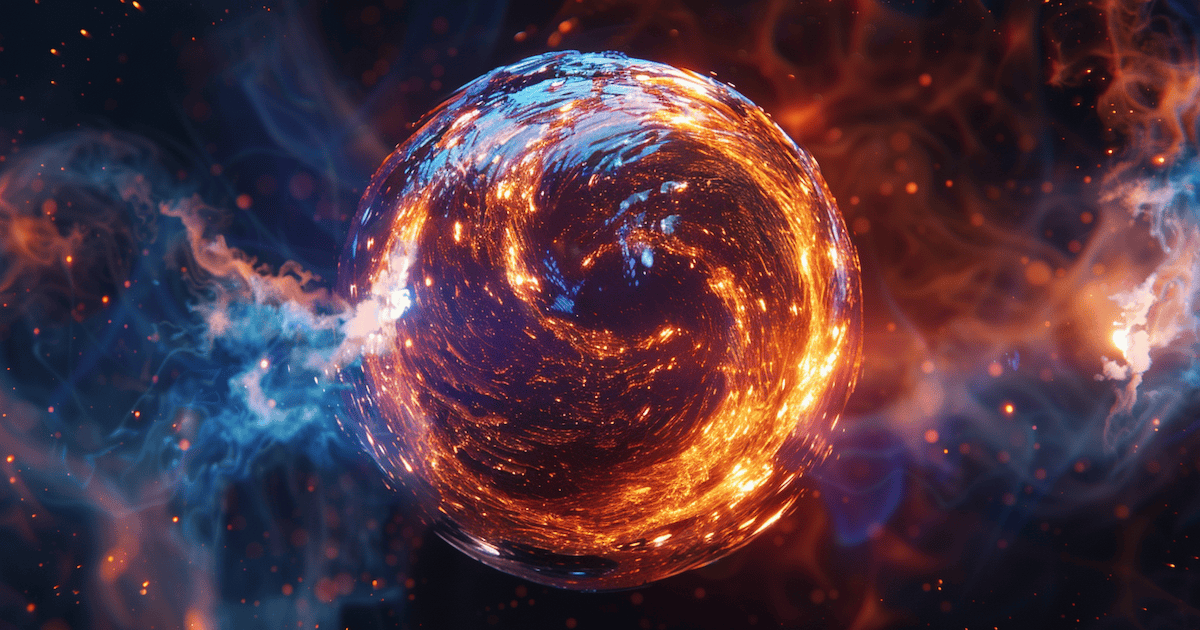
They call it a stellarator, for short.
Created at the Max Planck Institute for Plasma Physics in Greifswald, Germany, the Wendelstein 7-X stellarator is a unique kind of nuclear fusion reactor.
It’s one of most interesting projects in nuclear fusion over the last decade. Yet few know about it.
The concept of a stellarator was invented in 1951 at Princeton University. It led to the creation of the Princeton Plasma Physics Laboratory (PPPL).
Unfortunately, experiments with a stellarator back in the 50s and 60s performed poorly — far from the theoretical predictions made. So the stellarator design fell out of favor for decades.
This was unfortunate, as the approach held great promise for maintaining stable nuclear fusion reactions — the kind needed to power a city.
Stellarators’ unique design creates a twisted plasma… which has quite different characteristics compared to other approaches to nuclear fusion, like a tokamak reactor.
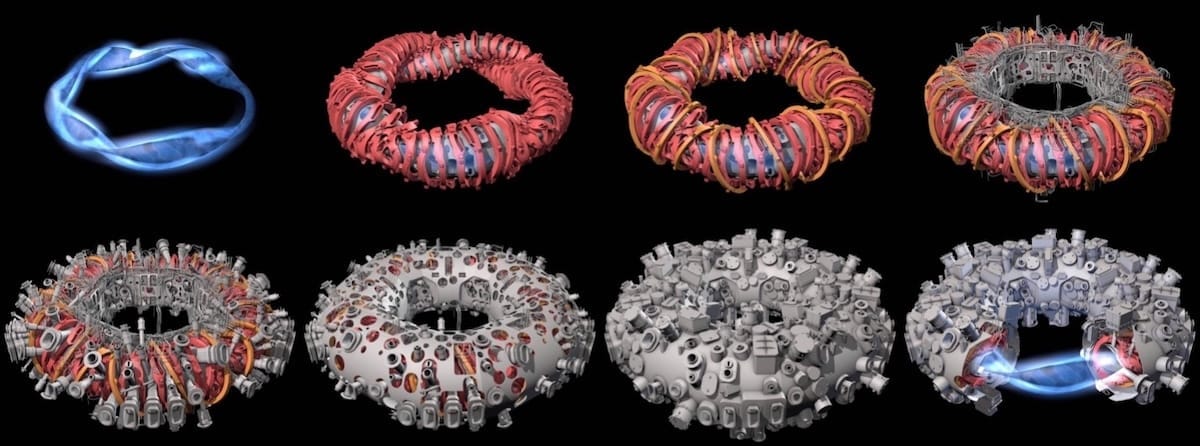
Above is a series of deconstructed images of a stellarator.
The upper left blue plasma represents the twisted plasma.
A helical toroidal chamber, which is similarly twisted, contains the nuclear plasma…
Below is an image from inside the Wendelstein 7-X fusion reactor, which gives us a sense of the odd internal shape of the stellarator plasma chamber.
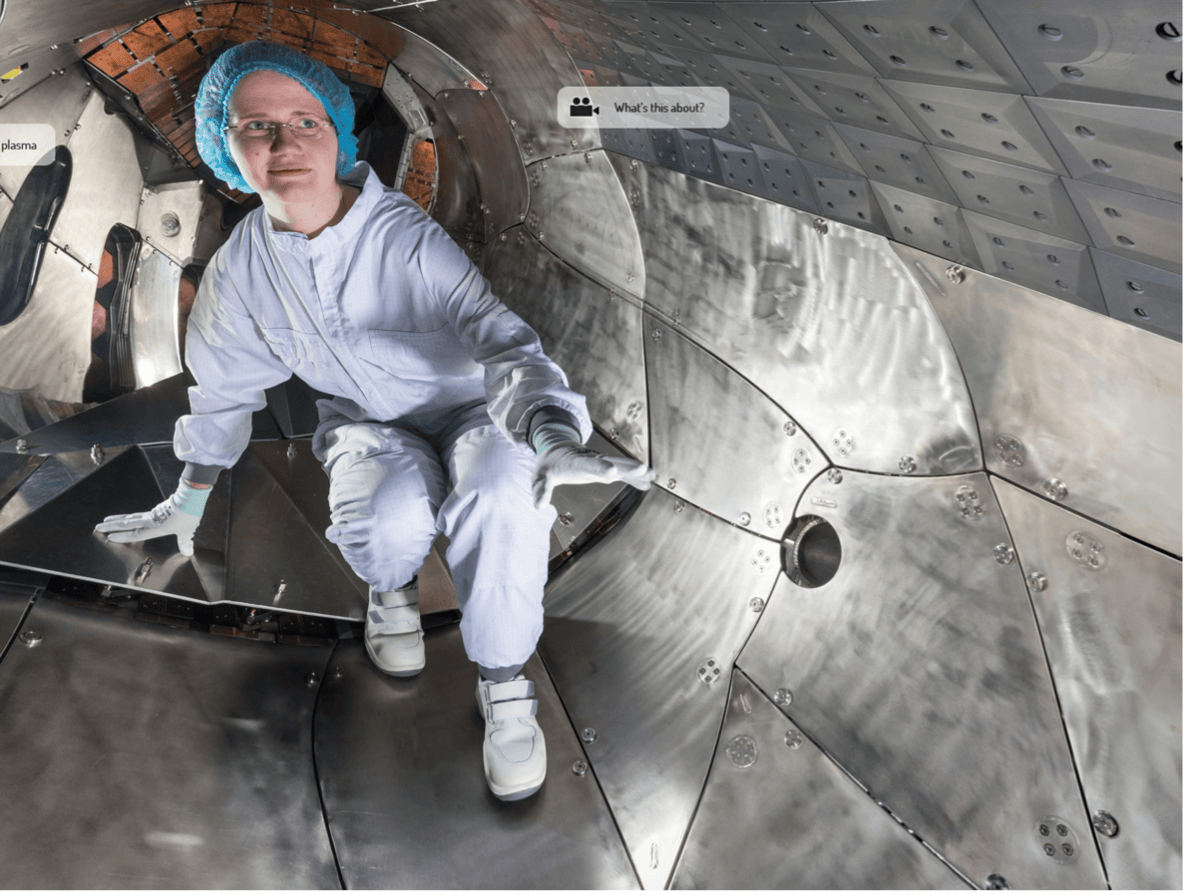
Surrounding the fusion chamber in the first image are the oddly shaped electromagnetic coils (in red).
The odd shape of the electromagnets makes fabrication complex and expensive. It’s one of the main reasons that we haven’t seen as much progress with stellarators over the last decade, as compared to other kinds of fusion reactors.
To create the correct twisted magnetic fields, the electromagnets need to be manufactured to millimeter precision.
But even given the above constraints, the allure of a stellarator hasn’t died.
The main benefit of a stellarator is that it requires significantly less power to maintain a plasma. And unlike a tokamak reactor, there is no need to run a powerful current through the plasma to maintain stability.
And a stable plasma is the key to limitless, cheap clean energy.
For those of us new to nuclear fusion, it’s helpful to get some quick background on what’s happening within the world of cheap, limitless clean energy — provided for by nuclear fusion.
As a quick refresher, we’ll recall that nuclear fusion is not nuclear fission. It’s a common misunderstanding.
Nuclear fission is what most people mean when they talk about nuclear energy. It’s the process splitting an atom’s nucleus into two or more smaller nuclei, which produces energy.
Nuclear fusion, on the other hand — a favorite topic here at Outer Limits — is the kind of energy produced by the Sun. This happens when two hydrogen nuclei merge, unleashing a huge amount of energy.
Unlike nuclear fission, a key advantage of fusion over fission is that it can produce energy with minimal or sometimes even no radioactive waste. And a nuclear fusion power plant will take up a fraction of the footprint compared to a nuclear fission plant.
Developments in nuclear fusion continue to be driven by what is happening in the private sector. And almost every company working in this exciting industry is still private.
The current industry-wide challenge has been maintaining the fusion reaction and keeping it stable.
As we discussed in Outer Limits — The Path Toward Limitless Clean Energy, the fusion reactions that have been tested to date are still measured in seconds, or even milliseconds. That means they’re a long way from running for extended periods of time — a requirement for providing utility-scale electricity for a power grid.
One approach mentioned above is the tokamak fusion reactor. The tokamak uses giant magnets to create magnetic fields, responsible for containing a nuclear fusion reaction — referred to as the nuclear plasma — within the tokamak’s donut-shaped chamber.
Last October, the JT-60SA tokamak in Japan achieved first plasma. It lasted 10 seconds.
You can see the reaction in the below image.

While this demonstrated an incredible milestone for fusion, it’s a great illustration of where we are right now with the technology.
Stellarators, on the other hand, are designed for continuous operations — potentially ideal for nuclear fusion reactors capable of powering any power grid.
This year is proving to be an exciting year for not just nuclear fusion, but also for stellarators.
The Wendelstein 7-X was built in 2014 and demonstrated its first plasma in December 2015. And this year, 10 years later, the 7-X is planned for commissioning and plasma operations this July.
My prediction is that in the second half of this year, we’ll see the 7-X shatter all records for longest stable fusion reaction, which will be measured in minutes instead of seconds or milliseconds.
This commissioning in itself is exciting enough, but there has just been another stellarator breakthrough announced this Tuesday…
And it has me even more excited about the potential for stellarator technology as a path towards commercial nuclear fusion.
The research came out of the Princeton Plasma Physics Laboratory (PPPL) — the same place where the stellarator design was invented.
The team at PPPL recently unveiled the MUSE permanent magnet (PM) stellarator, which is an innovative take on the classic stellarator design represented by the 7-X.
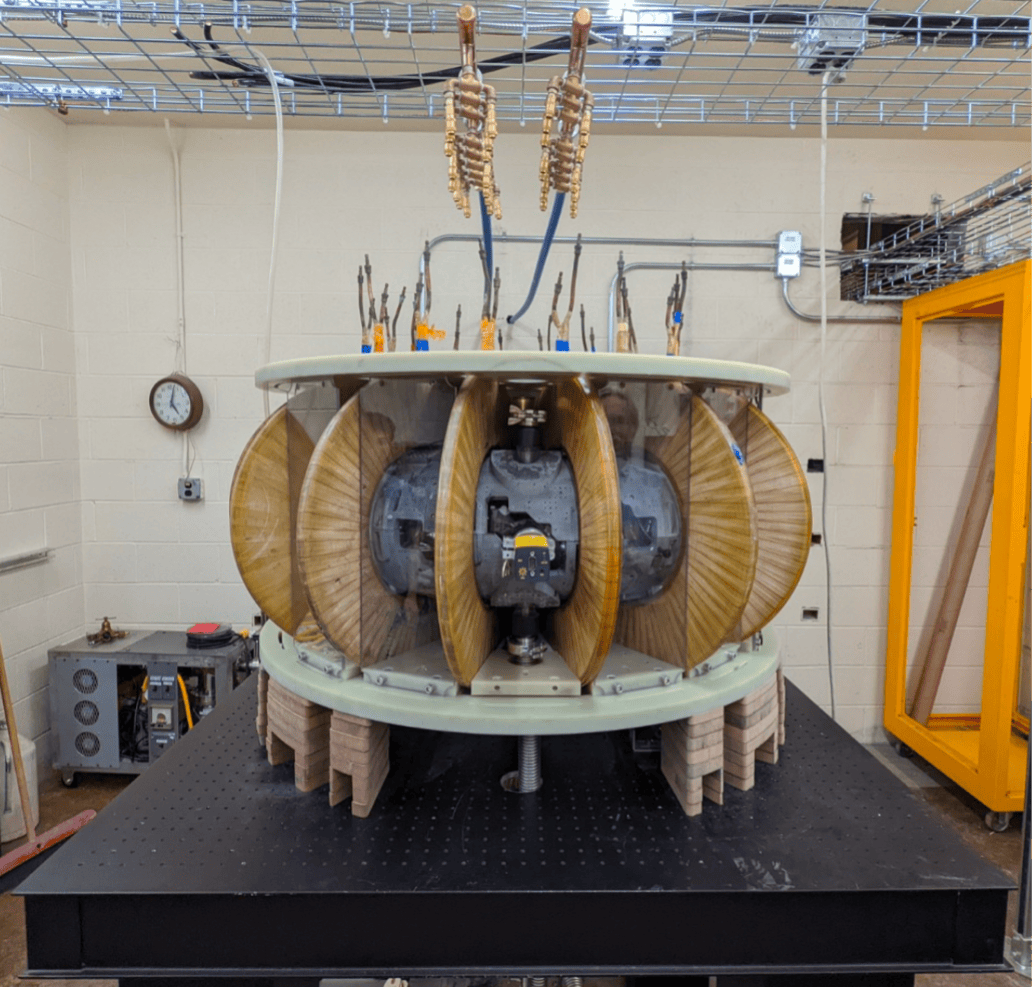
The miniature prototype version of MUSE — shown above — is capable of fitting on a laboratory bench. It is a proof of concept.
As the name suggests, the PPPL stellarator is different in that it uses permanent magnets… as opposed to large, complex, oddly shaped electromagnets — the red coils shown in the first image, responsible for stellarators’ cumbersome, costly, and time-consuming design.
Said another way, it addresses the single, largest disadvantage of existing stellarator designs.
Permanent magnets are permanently magnetized. Whereas electromagnets are designed to generate electric fields by running an electric current through them.
Below, we can see segments of the fusion chamber of the MUSE stellarator, with thousands of small permanent magnets installed on the interior of the chamber wall.
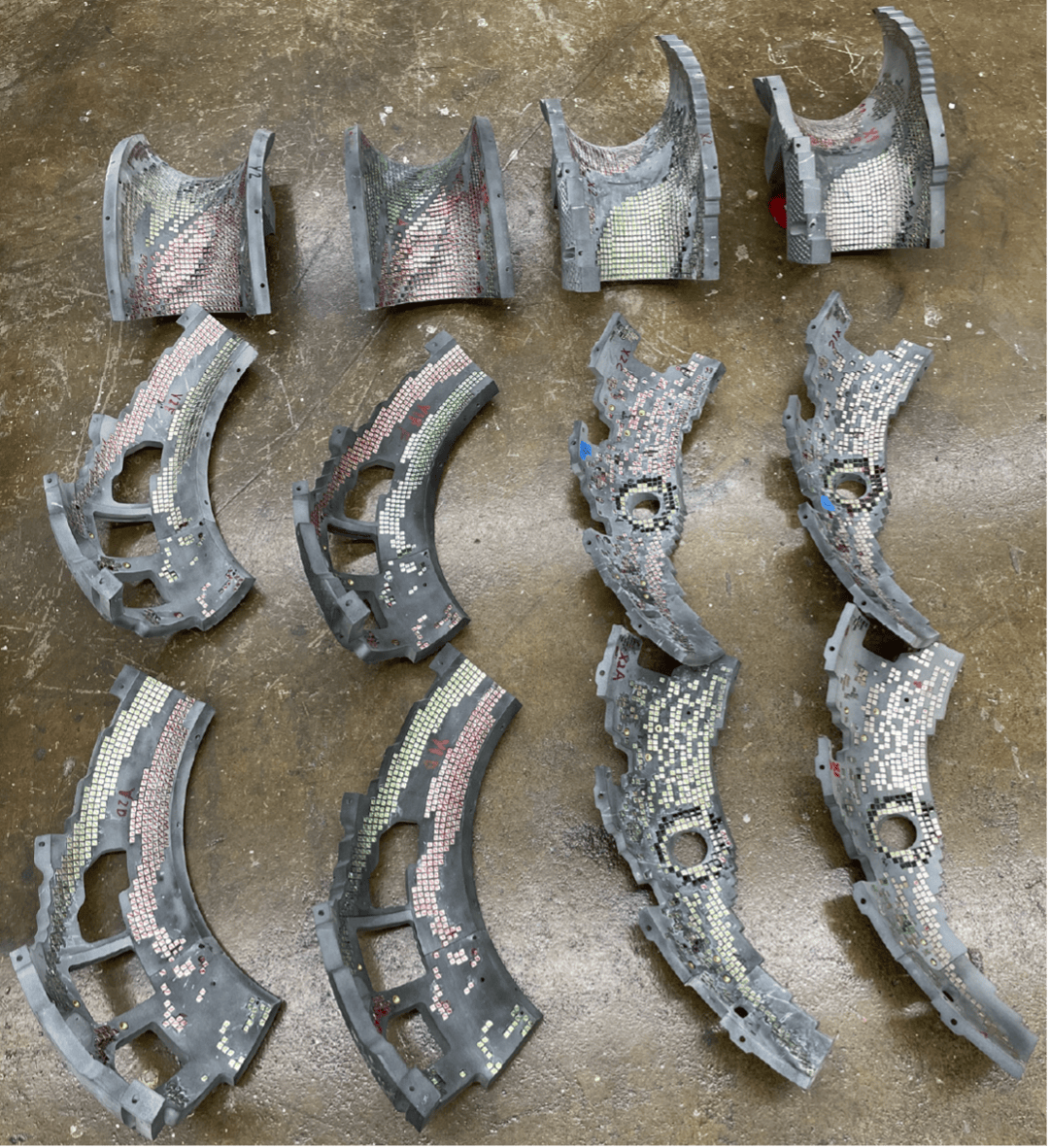
Here is a closeup of the permanent magnets on the interior of the chamber wall, as well as a picture from the outside looking into the MUSE stellarator.
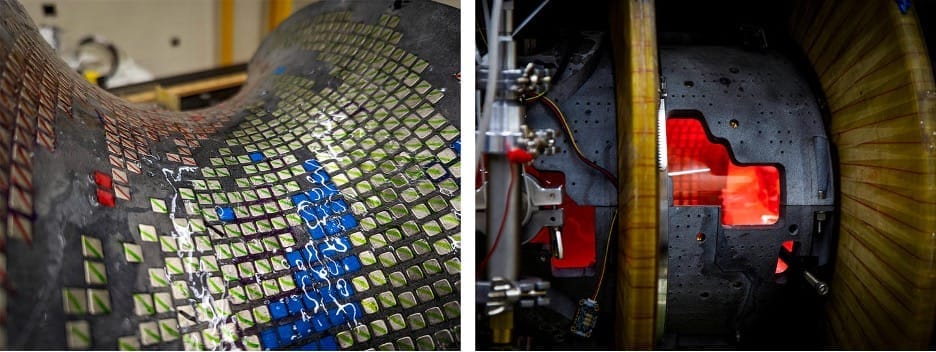
Another great benefit of this approach with permanent magnets is that new designs can be built quickly, tested, and improved at a much faster pace and much less cost.
Rapid innovation is normally rare in the nuclear fusion industry, because of the need for expensive, custom hardware manufacturing.
And it gets better…
The MUSE stellarator had another breakthrough.
It has demonstrated a concept known as quasisymmetry.
The easiest way to describe this concept is that the magnetic field that is created around the entire stellarator device is uniform, despite the changing shape of the magnetic field caused by the twisted plasma chamber design.
The team at PPPL reports that the MUSE quasisymmetry is 100-times better than any other existing stellarator. Needless to say, this is remarkable.
Permanent magnets are a tiny fraction of the cost of the typical stellarator electromagnetic coils.
Industrial permanent magnets can be purchased off the shelf, and won’t require the kind of customized, one-off manufacturing of an individual electromagnetic coil, something like what we saw on the X-7.
If successfully commercialized, the MUSE permanent magnet stellarator design would change the economics of fusion reactor design.
These latest developments with the Wendelstein 7-X and the PPPL MUSE stellarators are incredible news for the nuclear fusion industry.
And I also predict that they will lead to at least one private fusion company that will be well funded to bring a larger version to life…
In other words: It will be given an accelerated path in the race to build and commercialize a nuclear fusion reactor.
And that’s what we’ll be looking to invest in.
Thanks for the wave of great feedback lately! We always welcome it. We read every email and address the most common comments and questions in the Friday AMA. Please write to us here.